Retro Replay Review
Gameplay
Storm’s gameplay revolves around the simple yet addictive formula pioneered by Atari’s Tempest. You pilot a small ship that skims the perimeter of a geometric tunnel, aiming to shoot incoming colored bars before they reach you. With only 99 shots allotted per level, each decision to fire must be weighed against potential waste; missing your target not only squanders precious ammo but also allows the bars to edge ever closer to your ship.
(HEY YOU!! We hope you enjoy! We try not to run ads. So basically, this is a very expensive hobby running this site. Please consider joining us for updates, forums, and more. Network w/ us to make some cash or friends while retro gaming, and you can win some free retro games for posting. Okay, carry on 👍)
As you progress, new challenges emerge. The game introduces “Millibars,” the ominous orange bars that, if they slip past your fire, will begin to chase you around the tunnel’s rim. While other bars will harmlessly accumulate at the tunnel’s mouth, these persistent pursuers demand careful attention—their sheer persistence can corner you if multiple Millibars converge on your position. Learning when to shoot and when to hold fire becomes a crucial survival tactic.
Difficulty ramps up organically through progressively faster waves, tighter shot budgets, and, at higher levels, the tunnel itself vanishes from view. Without the guiding wireframe, you must rely on quick reflexes and pattern recognition to gauge the tunnel’s shape. This blind challenge reinvigorates the core mechanics, forcing you to adapt your strategies or face rapid elimination. In short, Storm’s gameplay loop is deceptively simple but offers depth for players willing to master its nuances.
Graphics
Unlike the crisp vector lines of the original Tempest, Storm opts for a retro charm by rendering its action in blocky text graphics. Every element—from the tunnels to the incoming bars—is built from ASCII characters, giving the game a vintage, hacker-era aesthetic. While some might find the visuals primitive, there’s an undeniable nostalgia in watching your cursor-like ship dart around a grid of characters.
The use of text characters actually enhances the sense of urgency. The stark contrast between your ship, the colored bar symbols, and the black background makes it easy to track fast-moving targets. Color plays a key role: each bar hue is distinct, alerting you to potential Millibars before they become threats. It’s a minimalist approach that proves effective, ensuring even on older hardware the frame rate remains rock solid.
Although modern gamers accustomed to 3D shaders might scoff at the lack of polish, Storm’s visuals serve its gameplay perfectly. The blocky art style supports quick readability and leaves nothing to obscure your aim. More importantly, it captures the spirit of early 1980s arcades, transporting you back to an era when gameplay trumped graphical fidelity. For retro enthusiasts, it’s a visual treat; for newcomers, it’s a functional, no-frills display that keeps the action front and center.
Story
Storm offers little in the way of narrative—there’s no elaborate backstory about alien hordes or galactic conspiracies. Instead, it leans into the classic arcade mindset: straightforward objectives, escalating challenges, and the pursuit of ever-higher scores. Think of it as digital sergeant drill—your only mission is to survive wave after wave of geometric onslaught.
That said, the lack of story can be a feature rather than a flaw. By stripping away cutscenes and text dumps, Storm maintains an unrelenting pace. You jump right into the action, and the only context you need is the growing threat of those colored bars. In a way, the silence and absence of narrative let you project your own motivations onto the game—whether it’s the joy of mastering reflexes or the drive to conquer that one impossible level.
For players seeking a deep lore or character development, Storm may feel sparse. But if you appreciate arcade classics where the story is the gameplay itself, you’ll find satisfaction in each narrowly-avoided collision and triumphant level clearance. The narrative here is entirely your high-score chase and the personal milestones you set along the way.
Overall Experience
Storm delivers a pure, old-school arcade experience that emphasizes skill, pattern recognition, and resource management above all else. The tight shot limit and relentless pace create a tension that keeps you glued to the screen, whether you’re playing in short bursts or marathon sessions. Every level feels like a fresh test of your abilities, and the knowledge that a few missed shots can topple your progress adds real stakes to each encounter.
While the blocky text graphics and absence of storyline might deter players expecting modern production values, those who appreciate retro design will find a lot to love. Storm is not about dazzling you with effects; it’s about challenging your reflexes and rewarding precision. The occasional moments of intense chaos—dodging Millibars while lining up the perfect shot—are where the game truly shines.
In the end, Storm is best suited for fans of classic arcade shooters and anyone curious about the origins of Tempest-style gameplay. It stands as a testament to how strong mechanics can transcend graphical limitations. If you’re looking for a straightforward, unadulterated arcade challenge that gradually ramps up in intensity, Storm offers a compelling ride down the tunnel.
 Retro Replay Retro Replay gaming reviews, news, emulation, geek stuff and more!
Retro Replay Retro Replay gaming reviews, news, emulation, geek stuff and more!
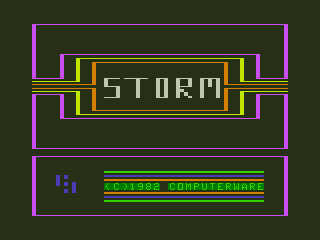
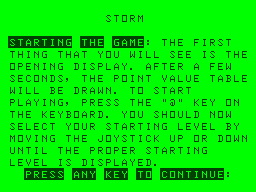
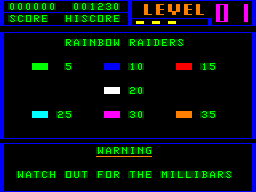
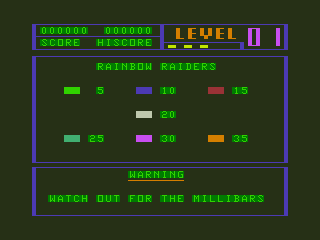
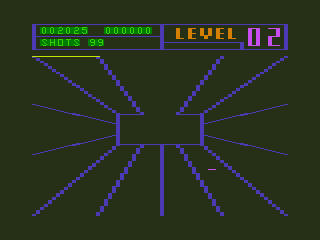
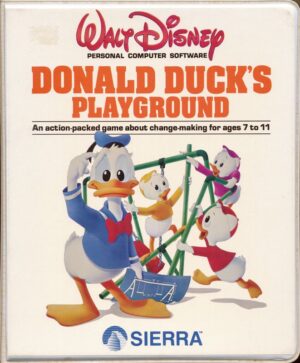


Reviews
There are no reviews yet.